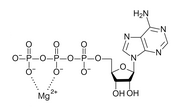and structure, have been characterised to date: soluble and transmembrane proton-pumping pyrophosphatases (sPPases and H(+)-PPases, respectively). sPPases... 14 KB (1,654 words) - 14:41, 14 August 2023 |
occurring plant hormone, auxin (indole-3-acetic acid, IAA), induces H+ proton extrusion into the apoplast. Such derived apoplastic acidification then... 14 KB (1,787 words) - 02:49, 11 January 2024 |
 | be present only in the older parts of the plant. For example, in Pinus radiata starved of Mg2+, one of the earliest identifying signs is the chlorosis... 86 KB (10,486 words) - 18:07, 19 April 2024 |
 | throughout the environment. The process of mineral-weathering releases protons and iron into the soil. This results in a lowering of the pH. A diverse... 24 KB (2,863 words) - 23:36, 12 August 2023 |
 | utilizes pseudopods is Naegleria fowleri. A Simple Animation Among the radiata, jellyfish and their kin, the main form of swimming is to flex their cup... 49 KB (6,577 words) - 04:20, 1 April 2024 |


